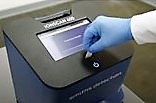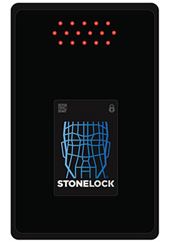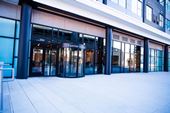20/06/2007
DVTel helps cutting down crime in Baltimore
Ridgefield Park, NJ (USA)
What started out as a relatively small video surveillance initiative aimed at high profile tourist areas, has expanded to high-risk neighborhoods where upwards to 275 cameras are deployed to prevent and investigate crime on Baltimore's streets. The DVTel iSOC was chosen by the Baltimore mayor's office, and is operated by the Baltimore police department in six different locations, each dedicated to "pro-active monitoring" of suspicious activity. In addition to the neighborhood surveillance cameras, DVTel iSOC software also manages an additional 91 cameras-all wireless-in four Baltimore housing projects.
Many of the city surveillance cameras are also wireless, which was part of the appeal of the DVTel solution. "We don't have optic fiber running under the streets once we expanded outside of downtown," says Beth Hart, manager of CCTV for The mayor's office of information technology "We couldn't be trenching for blocks and blocks, so DVTel's combination of wired and wireless technology was very appealing to us"
All cameras are pan-tilt-zoom models and are located in high traffic areas. Each neighborhood is monitored at a dedicated monitoring station. Pro-active monitoring is done for an extensive amount of time each day and all cameras are recorded 24 hours a day at 30 frames per second to maximize the effectiveness of post-event investigation. But post-event analysis isn't the primary focus. Hart comments, "We're actively looking for suspicious activity and our monitoring personnel are skilled in knowing what to look for. Once they pick something up, they monitor live, as well as do playback, then they are in direct contact with officers called to the scene. When those officers arrive they receive as complete a brief as possible on what happened, who's involved, and what possible next steps are"
The DVTel system and the policy of pro-active monitoring are proving effective. Recently, a man was found lying dead in the street. Fortunately, a camera had been trained on the area and an investigation turned up video showing the incident and providing important information that lead to identification of the suspects. Numerous violent acts like his have been successfully investigated and are often caught live so monitoring personnel can effectively support police reaching the scene of an incident.
"On other occasions," Hart continues, "the video has been advantageous in encouraging witnesses to cooperate. We know they were on the scene because we have video showing them at the incident" Video surveillance has been used to monitor gang activity and identify license plates, as well people involved in incidents.
"We have to be careful: cameras aren't the total solution, they are a tool. As the police commissioner has said, our goal is to deter crime, but if the cameras don't deter it, then we want to use the video to solve crimes. The DVTel system has worked well, our operators are pleased. DVTel has been very responsive to our needs and the system is easy to train and easy to use" adds Hart.
The city's long-term goal is to change behavior, to make people realize if they commit crimes in these neighborhoods they will be caught. Thus far, the city's program has been effective: year-to-date violent crime has fallen 17% and just as important, false claims of excessive force have dropped as have false reports of crimes. These positive developments mean higher police productivity and more hours spent fighting crime. As Hart sees it, "When we have 25 cameras on an area, that's 25 extra pair of eyes on the street"















